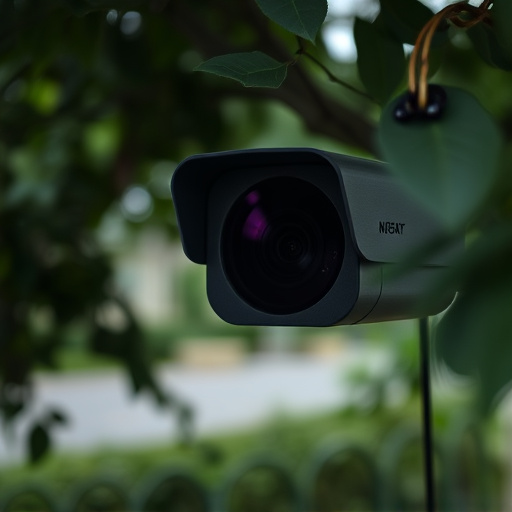Strategically placed hidden cameras pose significant privacy threats. Understanding best hidden camera locations (e.g., behind mirrors, inside bookcases) enhances home security and protects privacy. Advanced technology like AI-powered digital forensics and thermal imaging aids in detection. Balancing effectiveness with legal considerations, especially regarding privacy laws, is crucial when placing monitoring devices.
Uncover the insidious world of hidden monitoring devices with our comprehensive guide. Learn how to identify and detect covert cameras, from understanding diverse camera types and their unique signals to mastering visual checks in potential hideouts within your own home. Explore cutting-edge technological solutions enhancing home security and discover legal boundaries surrounding privacy and ethical monitoring practices. Arm yourself with the best tips for safeguarding your personal space.
- Understanding Hidden Camera Types and Their Signals
- Visual Checks: Inspecting Common Hideouts at Home
- Technological Solutions for Advanced Detection
- Legal Considerations: Privacy and Monitoring Ethics
Understanding Hidden Camera Types and Their Signals
Hidden cameras, often referred to as surveillance devices, come in various forms and can be strategically placed in virtually any setting. Understanding the different types is crucial for effective detection. One common type is the miniature camera, so small it can fit discreetly into everyday objects like light switches or smoke detectors, making them near-impossible to spot with the naked eye. These tiny cameras transmit signals via wireless networks, infrared, or even Bluetooth, allowing for remote viewing and recording.
Another less obvious type is the hidden camera in the form of a regular object, such as a fake power outlet or a decorative figurine. These devices mimic everyday items while capturing video and audio discreetly. Detecting these cameras requires a keen eye and knowledge of common hiding spots. When it comes to home security, being aware of the best locations for these devices—like behind mirrors, inside bookcases, or under furniture—can significantly enhance your privacy protection measures.
Visual Checks: Inspecting Common Hideouts at Home
When it comes to hidden monitoring device signal detection, a visual check is often your first line of defense. Start by inspecting common hideouts around your home for any unusual objects or devices. Look behind and under furniture, inside decorative items like picture frames or clocks, and along baseboards or corners where cameras could be cleverly concealed. The best hidden camera locations in your home might seem obvious, but it’s surprising how creative intruders can get.
Pay close attention to areas with poor lighting or narrow spaces, as these are favorite spots for covert recording devices. Regularly checking for any new or unfamiliar objects and staying vigilant can help you uncover potential threats to your home security, ensuring peace of mind.
Technological Solutions for Advanced Detection
The evolution of technology has introduced sophisticated solutions for hidden monitoring device detection, revolutionizing home security measures. Advanced digital forensics tools and software now enable professionals to analyze video feeds and images with unparalleled precision, identifying subtle patterns and anomalies that might indicate the presence of hidden cameras. These technologies employ artificial intelligence and machine learning algorithms to scan through vast amounts of data, making it easier to uncover covert surveillance equipment, especially in hard-to-reach or obscure best hidden camera locations.
By integrating thermal imaging, infrared technology, and high-resolution sensors, security experts can detect heat signatures and visual cues that are often missed by the naked eye. These innovative approaches ensure that even the most discreetly placed hidden cameras can be identified, providing peace of mind for homeowners concerned about their privacy in the age of advanced home security systems.
Legal Considerations: Privacy and Monitoring Ethics
When discussing hidden monitoring device signal detection, it’s crucial to approach the topic with a strong understanding of legal considerations, particularly in relation to privacy and monitoring ethics. The placement and use of such devices can be fraught with legal implications, as many regions have strict laws regarding surveillance and the right to privacy. For instance, in many parts of the world, placing hidden cameras in areas where individuals expect privacy, like bathrooms or bedrooms, is illegal without explicit consent. Moreover, capturing or storing footage without knowledge can amount to a serious breach of privacy laws.
As you explore best hidden camera locations for home security, always consider the ethical dimensions and legal boundaries. It’s not just about finding the most covert spots; it’s also about respecting the rights and privacy of all individuals within your home or place of business. Consulting with a legal professional can be beneficial to ensure that any monitoring efforts adhere to relevant laws and uphold ethical standards.
Detecting hidden monitoring devices is a crucial aspect of maintaining privacy and home security. By understanding various camera types, conducting visual inspections, leveraging technological advancements, and being aware of legal boundaries, you can significantly reduce potential breaches. Remember, staying informed about best practices in identifying hidden cameras is an essential step towards safeguarding your personal space.
